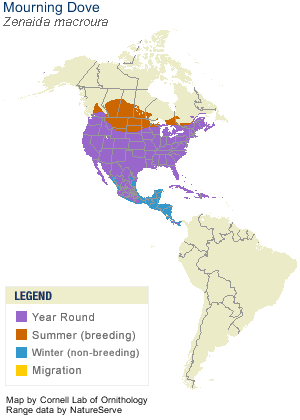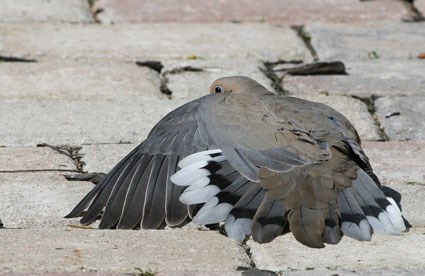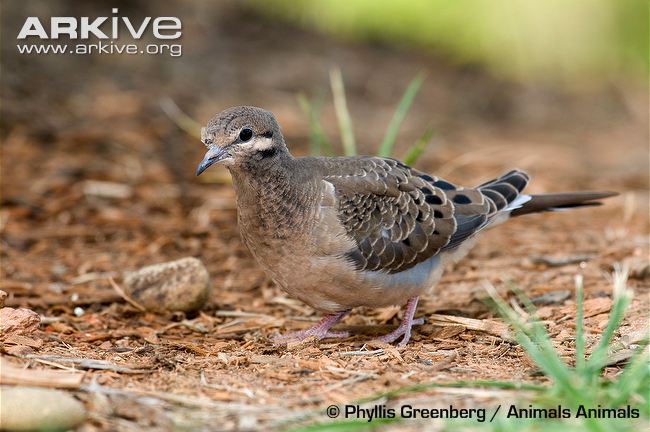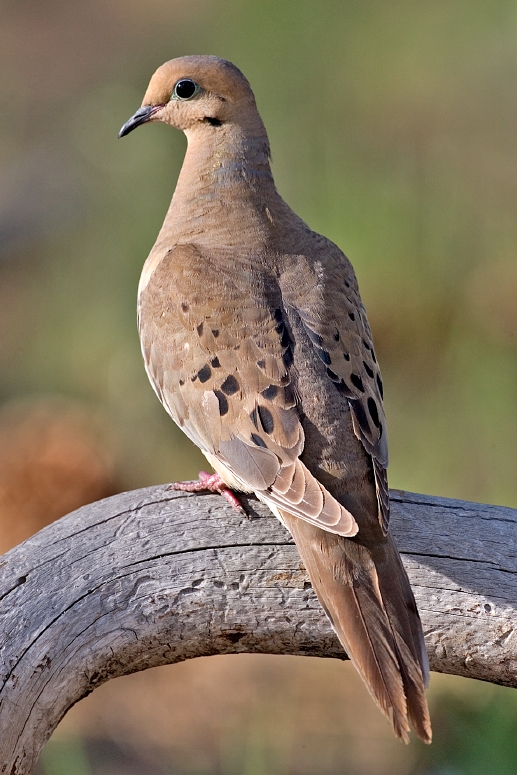Zenaida macroura
Family: Columbidae
Order: Columbiformes
Where can I find it?
Mourning Doves are ubiquitous and can be found in all sorts of environments – farms, towns, open woods, fields, roadsides and so forth. While telephone wires make the perfect perches for these birds, be sure to also scan the ground as these doves spend a lot of time on the ground where they feed. Depending on where you are in Canada, Mourning Doves can be found year round (e.g. Nova Scotia) or during the summer when they return to breed (e.g. Southern Alberta).

Quick Identification:
Adults
- Pointed tail with white tipped tail feathers
- Black spots on wings and cheeks
- Overall dusky brown/tan plumage
- Males have a pink breast and a blue head

Juveniles
- Similar to adults but lighter with a scaly appearance (i.e. as if it had scales like a fish)

Call
Long, hollow, echoy, and of course – mournful. Second note of call is a sung at a higher pitch. “hoo-oooo-oooo-oooo-oooo”
The flight of mourning doves produces a unique whistle-like sound. (see below!)
Did you know?
- The Mourning Dove can be found all over North America to Central America – Canada to Mexico!
- Mourning Doves often feed intensively on the ground and store their food in what is known as a crop. This is a unique storage space that is part of their digestive system. Once a crop is filled, birds are are able to digest their food from a safe perch [1].
- Capable of surviving desert habitats due to their ability to drink brackish water (up to half the salinity of sea water!) without becoming dehydrated. [1]
- One of the most abundant birds in the U.S.A. 350 million. [1]

Stories from the Loons:
In Meghan and Courtney’s apartment, there is a clock that plays a different bird call/song every hour. The Mourning Dove is the 7:00 bird.
Courtney banded Mourning Doves in the summers of 2012 and 2013! Her favourite part was letting them go and hearing the wing-whistles as they flew off. It made her feel like a magician.
Credits:
- Header Image by Courtney Bird
- © Harold Stiver
- © 2006, Alan D. Wilson Mourning Dove, Cabin Lake Viewing Blinds, Deschutes National Forest, Near Fort Rock, Oregon
- © Matt MacGillivray, Toronto, Ontario, Canada, May 2008
Mourning Dove Pilots Point, Westbrook, CT April 18, 2008 ©John Schwarz


